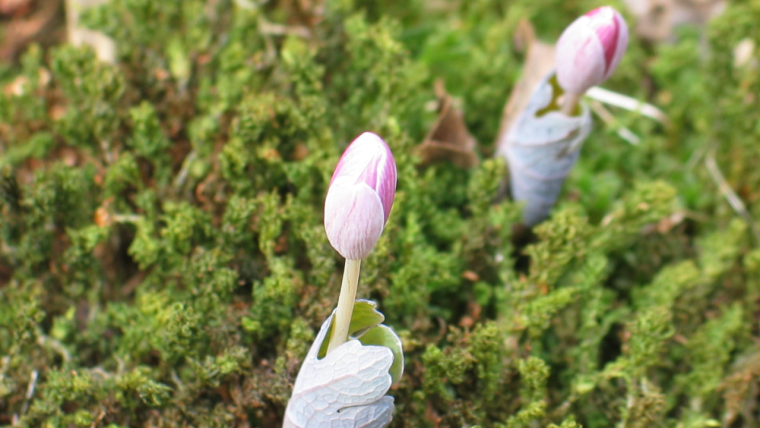
In a nutshell
In many deciduous forests, understory plants such as spring blooming wildflowers depend on a critical period of sunlight before overstory tree leaves block out the sun. Climate change has caused a shift to earlier leaf out in many plants, but not all taxa are shifting at the same rate. One recent study that used herbarium data found that overstory trees have advanced leaf out in response to climate change, while wildflowers emerge at the same time as they used to. These differing responses reduce the window of time in the spring when sunlight can reach the forest floor. A second recent study that used Nature’s Notebook data found conflicting results, that wildflowers were more responsive to a warming climate than trees, leading to a longer window of time for spring sunlight to reach wildflowers on the forest floor.
In the present article, authors from these two papers came together to investigate which factors may have caused the differences in findings between the two studies. The scientists considered the geographic extent of the datasets, the phenophases measured, the species evaluated, and the modeling approaches used. The differences in results seemed to stem from the different types of data used – herbarium specimens and observational data collected through Nature’s Notebook – as well as the different geographic and temporal extents of the datasets.
After adjusting the methods to make the two studies more consistent, the authors found that both datasets indicated wildflowers in the southern part of eastern North America are less sensitive to changes in temperature than overstory trees. They also found that phenological activity was earlier in warmer years and in warmer locations.
What is special about this study?
Datasets like Nature’s Notebook offer a large spatial extent and more precise estimates of the start of phenophases. Herbarium data offer a temporal depth that often spans over a century. The authors conclude that ecological studies would benefit by including both types of datasets, herbarium collections and community science repositories.
What does this mean for YOU?
This study demonstrates the value of observational data collected by Nature’s Notebook observers like you in understanding the impacts of climate change on plant phenology. The data that you collect allow scientists to include data from a broad geographic range that would not be possible with herbarium data alone, an important aspect for understanding complex ecological systems where plants may be shifting at different rates.
Citation: Lee, B.R, E.F. Alecrim, T.K. Miller, J.R.K. Forrest, J.M. Heberling, R.B. Primack, R.D. Sargent. 2024. Phenological mismatch between trees and wildflowers: Reconciling divergent findings in two recent analyses. Journal of Ecology. doi.org/10.1111/1365-2745.14317